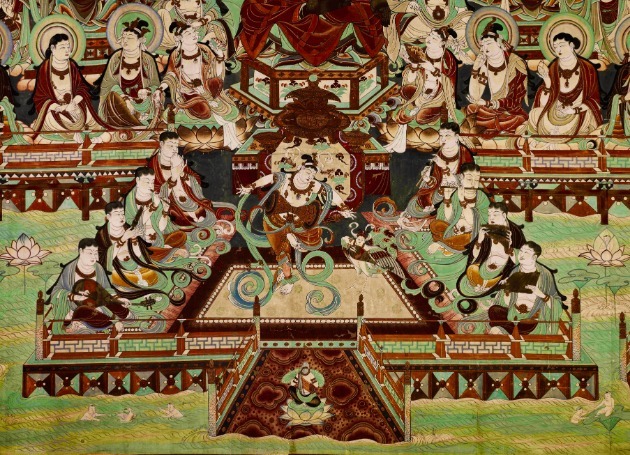

A UNESCO heritage site, the Mogao Caves are carved into cliffs on the edge of the Gobi Desert at Dunhuang, a trade hub on the historic Silk Road. Many of the murals record exchanges between the East and the West. A large number of the musical instruments depicted in the murals have never been seen or even recorded in other forms. This creates a huge challenge to artists who want to reproduce them.
"Painters only portrayed the appearance and didn't explain how they made sounds," says Ma Chenghu, a young man from Lanzhou, Gansu, who leads a team attempting to make these musical instruments a reality. "That's the biggest difficulty when reproducing these painted musical instruments as real objects."
For instance, a kind of ruan (a four-stringed round lute) appears twice in the murals. Unlike the ordinary ruan, this one resembles a lotus flower with seven petals.
Consequently, Ma says, the special type of ruan means craftsmen have their work cut out, no pun intended, to make it playable. They have tried many times to make one that can be played.